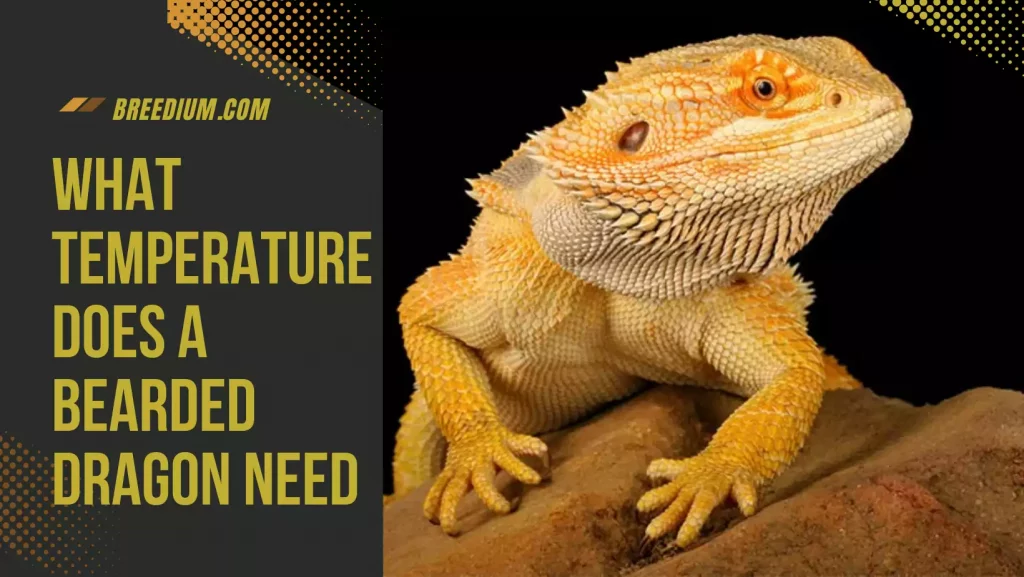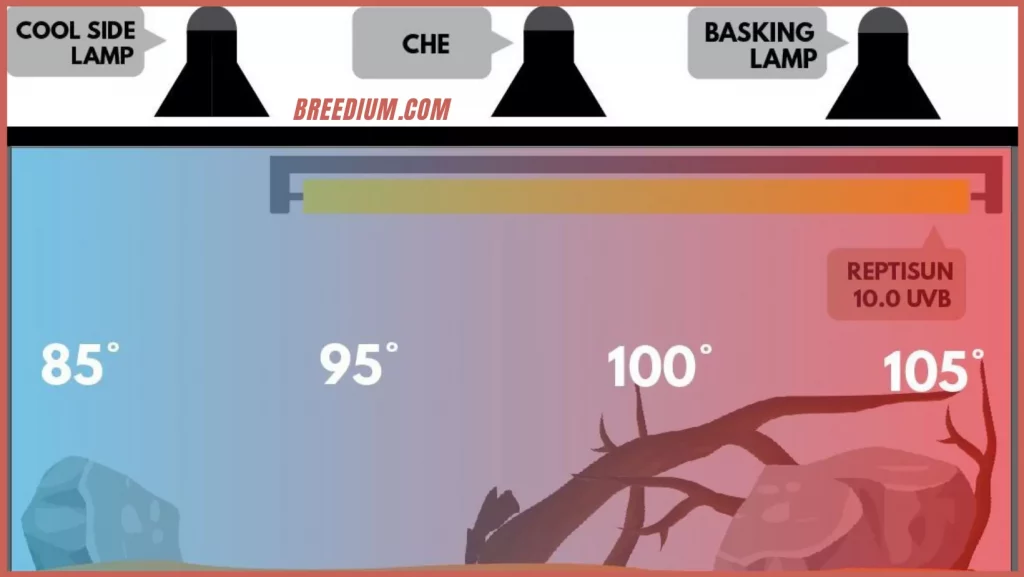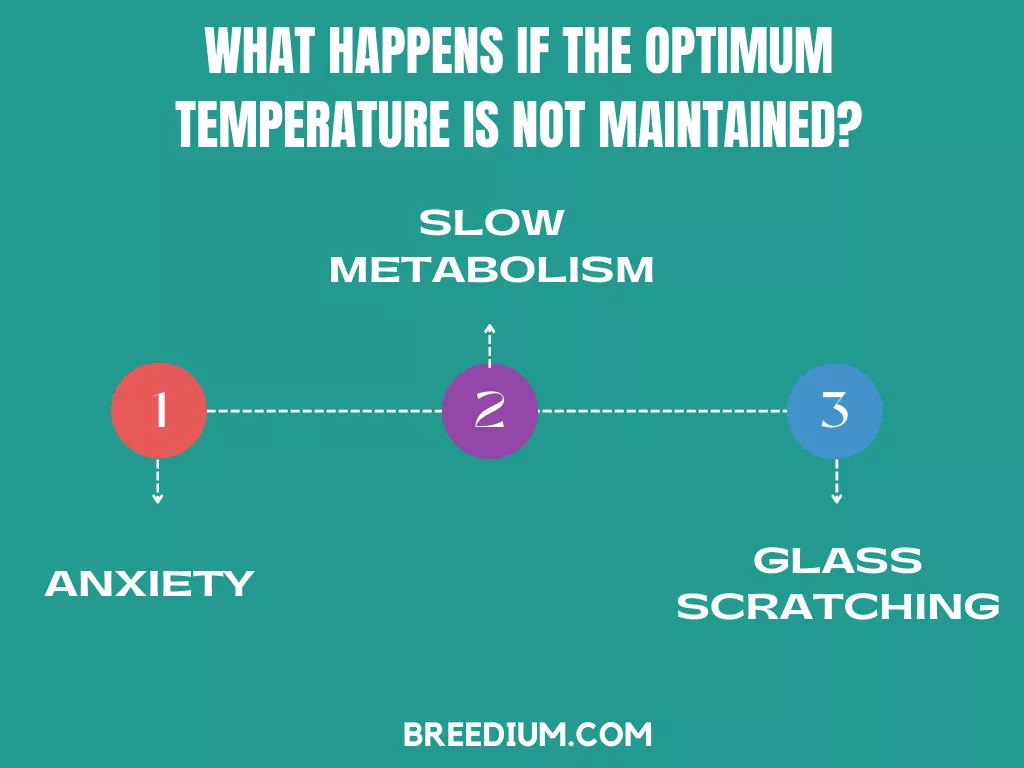What Temperature Does A Bearded Dragon Need? | Care Guide 2024
Bearded dragons are reptilians designed for the hot arid climate, but they do not require very hot temperatures inside the house. So then, what temperature does a bearded dragon need? The more you know how these reptilians function, the more you can find out about the environmental factors that will make these dragons most comfortable.
Temperature plays an integral role in the way bearded dragons will thrive. If it is too high, these cold-blooded reptilians can be as adversely impacted as they would be if the temperature was too low. Moderation may be crucial, but it is best to know what the best temperature for these reptilians may be. Learn How To Trim Bearded Dragon Nails too.
What Temperature Does A Bearded Dragon Need
Reptilians do not have a temperature regulatory system like mammals. Due to this, they have to be in moderate temperatures as their blood becomes warm or cold according to their surroundings. When the bearded dragon is in cold weather, its body begins to get cold, and vice versa. However, pet owners must also know what the adequate temperature for bearded dragons to thrive is. These reptilians cannot regulate their body temperatures, and they need energy from the sun to keep their bodies warm.
Bearded dragons can be adversely impacted by very high or low temperatures. In the wilderness, bearded dragons have ample exposure to the sun, and the UV radiation helps them retain heat in their bodies. However, when the dragon is indoors, there can be more challenges in absorbing heat from the sun as most owners put their pets in tanks with UVB lamps.
Pet dragons can miss out on sunlight because they are not exposed to indoor lighting and natural light interchangeably. Owners can either keep their dragons exposed to the sun, or they can keep them indoors, which by far is the safer option! However, these dragons need regular temperature control inside their tanks to ensure that they are neither too cold nor hot. Please read Do Bearded Dragons Get Lonely.
Best Temperature For Bearded Dragon
Infant bearded dragons of age up to six months require a slightly higher temperature than adult dragons. Since bearded dragons grow quickly, their requirements will also be temporary, although, the temperature control has to be around 95⁰F to 110⁰F.
This range is typical for these young dragons as they need to thrive in the light and absorb energy to grow.
Adult Dragons And Temperature
Adult bearded dragons require temperature ranges between 80⁰F to 90⁰F, this range makes their metabolism run fine. They feel energetic and rested due to the body balance from a healthy circulatory system and a healthier lifestyle.
Diet is the most essential aspect of healthy living. However, if your bearded dragon is not living in the right temperature range, it can develop numerous issues.
What If The Optimum Temperature Is Not Maintained
Bearded dragons can fall ill when they are feeling too cold or too hot. Here are a few things you may see your dragon struggle with if the temperature range is not suitable.
Anxiety
Bearded dragons living in unsuitable temperatures can become anxious if their body is not functioning correctly. The best temperature ranges mean that these creatures will be calm and at ease.
However, if the temperatures are not right, the dragon will feel upset and this will show in their behavior. Anxiety and disturbed attitudes will be visible through stress marks, erratic behavior, and lack of appetite.
Slow Metabolism
When it is too cold for the bearded dragon, their metabolism will slow down and they will feel lazy. This will lead to a drop in appetite as well and over prolonged periods, it can result in weakness.
Glass Scratching
When the temperature is high, the dragon may feel anxious, and hyper and may express its dilemma by scratching the walls of the tank. This is called glass dancing as well and denotes the stressful mental condition of the bearded dragon.
The Temperature Gradient
The temperature gradient is an excellent way to ensure that the bearded dragon can select the zone that it requires temporarily. Moreover, these creatures living in the wilderness experience warm days and cooler nights, and the temperature gradient can fulfill that.
What is a temperature gradient? It is the temperature difference from one end of the tank to the other. One end of the tank can be warm with a basking rock and UVB light overhead.
The other end can be cool, where you can place some plants for the dragon to hide under and enjoy the cool air while it rests. Furthermore, you may also like reading Best Substrate For Bearded Dragons.
Conclusion
The optimum temperature range for adult bearded dragons is between 80⁰F to 90⁰F. Younger bearded dragons require higher temperatures, and the maximum is 110⁰F. You can maintain a temperature gradient inside the tank to ensure that the bearded dragons stay healthy and happy.
Frequently Asked Questions
How do I know if it is too hot for my pet dragon?
If your pet dragon is young, it will require a maximum temperature of 110F, whereas adult dragons require a minimum temperature of 80F and feel good if the maximum temperature is 90F. This range will ensure that your dragon feels calm. If the temperature is more than this, it will be too high for your pet.
What should be the nighttime temperature in my bearded dragon’s tank?
Nights are cold in the wilderness where bearded dragons stay under plants, covered with leaves so that they can feel warmer. However, their bodies can operate fine in cool temperatures.
Similarly, when indoors the nighttime temperature of the bearded dragon’s tank has to be lower than the day temperatures. You can maintain a night temperature of 80⁰F to ensure that the bearded dragon feels a difference between the day and night. Moreover, the natural behavior of these pets will be at play, and they will feel calm and happy!

Emma is a pet enthusiast, and her way with words makes her an expressive writer. Her interests lie in healthcare and planning nutrition for various pets. She has two girls, and she’s passing her passion to them through occasional volunteer projects in the small neighborhood zoo. Emma joined our team as an enthusiast and has added more years to her experience by researching more about various creatures!









